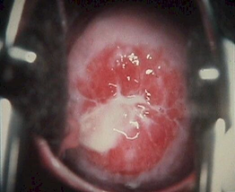Clerking Format for FEMALE PATIENTS (all,
Obstetrics little different)
(INTRO)My Patient
name is ………………………..,she is a (age)….. old (Race )……….. lady, Gravida……..
Para………. IF PREGNANT GRAVIDA
…., IF NOT PREGNANT & HAS CHILDREN
PARA………. .
She is known case of ……………..( any Medical
Problem or issues) eg Diabetse for 10 years and Hypertensive for 3 years. If any MEDICAL PROBLEMS
EG Diagnose as pulm TB , 3 months ago and currently on anti Tb
treatment
(CHIEF COMPLAIN)
She presented with history of
………………………………etc…EG.she presented with
low grade fever & vomiting for 2 days
(HPI): HISTORY OF
PRENSENT ILLNESS
Mrs ………. Eg case
describe c/o in detail, ass factors, aggravating & relieving factors
She was well until last Friday
when she develop low grade fever, the fever was of sudden onset, there were no
chills or rigor. She denied any body aches, headaches or pain behind her eyes(
periorbital pain). The fever settle after one day but on the 2nd day
she experience severe vomiting
She vomited between 15-120 times, the vomitus
is basically food & water she took, there is no bilous or blood in the
vomitus. It was non projectile. There were no obvious aggravating factors. The
vomiting slowly improved after taking some medication…….???
On further questioning, she
denied any diarrhea, abdominal cramps or pain, she has no history of taking
food in any unhygienic places. Etc etc
Inview of this she seek
medical advice from the health clinic
(KKIK……..) from there she was referred to serdang hospital for further management………
She has been in the ward for last 2 days. She was put on intravenous fluid
& given some medication. She condition has improve since then. She has been
investigated for………… & what is the
treatment & management in the hospital……………
SYSTEMIC REVIEW:…………………………………….No headaches, blurring of vision, no
body rashes, etc etc related to your history
MENSTRUAL HISTORY
She attained her menarche at
the age of 12 ( …….) age. The cycle has been regular with 28-30 cycles. Her
flow is between 5-7 days. There were no menorrhagia (heavy period) or
dysmenorrhea (painful periods). Her LMP (last Normal Menstrual Period ) is on
the 12. October 2016. She is up to date with her pap smears. Her last pap
smear was done in 2016, and she was told it was normal
PAST OBSTETRICS HISTORY
She is para 2, has 2 children
age 7 & 2. Both the children were delivered by caesarean section for breech
presentation ( baby upside down). The weigh 3 & 3.3 kg. There were no
intrapartum & postpartum ( during & after delivery) complications. Both
the children are well & alive. She breast fed her children for 6 months….(
breast feeding or bottle feeding or mix)
In between pregnancy she took
contraception ( OCP, IUCD etc…..)
(PAST MEDICAL HISTORY)
In terms of his past medical
hIstory, He was diagnosed to have PTb in Sandakan , She
was diagnose PTB after she presented with chronic cough & history of LOA,
LOW…………, Full assessment was carried out & the diagnosis was confirmed by +
sputum for AFB. She was subsequently started with anti-Tb treatment. She has
taken the anti TB treatment for last 3 months at the chest clinic/ Health
clinic. She is very compliant to the treatment. All her family members were
screened & they tested negative.
SHE IS NOT ALLERGIC TO ANY MEDICATIONS OR FOOD ( Better to put after
medical h/o so don’t forget)
PAST SURGICAL HISTORY
She never had any operations
before………
If got operations…….. ? what
op & years any complications ( eg……. She had 2 CSection on 2009 & 2017)
FAMILY HISTORY
She is the youngest of 8
siblings / the third of 4 siblings. His parents are still alive & well. His
mother is also diabetic but not hypertensive. His father has no medical
illness. All his sibling is well and has no similar illness. There were no one
in her family with PTB
PERSONAL/SOCIAL HISTORY
She is married to EN………………………,
she works as a………………., her partner works as……………………….. they live in a flat/
single storey teres / double storey teres/ single or double storey
bungalow/condominium I ……………………………kajang/serdang………. The house is well equipped with adequate basic amenities like
water & electricity. Their combine monthly income is RM 2000. They have
……….children. She and her partner does
not smoke cigarette or consume alcohol. He also does not indulge in high risk behaviors’.
She take s balance diet with 2-3 serving of meat per week. Recently after
contracting with PTB she had loss about 3 kg
IN SUMMARY, MY PATIENT Pn/madam……………..,
A KNOWN CASE OF DIABETES PTb diagnosed 3 months ago & still on anti-TB
treatment presented with low grade fever with severe vomiting
PROVISIONAL DIAGNOSIS:……………………………………………….
DIFFERENTIAL DIAGNOSIS:1 …………………………………………
2………………………………………….
3. …………………………………………
HOW WOULD YOU MANAGE:………………………………………..
I would like to do some investigation:, l would like to do FBC to see
any evidence of infection. I also would like to check his renal function to see
if there any evidence of renal impairment. LFT to look for hypoalbuminemia. As
per symptoms an ECG & Chest x-ray may provide me with any evidence of pleural effusion or cardiac failure. Others…………………………..
1.
Blood
test FBC, RP, LFT …………whey & reasons
2.
Sputum
AFB, C&S
3.
Cxray,
ecg, echo whey & interpretations
4.
Other
test d-dimer, Doppler studies, CT scan, MRI etc………..
5. The options for this patient are A. CONSERVATIVE MANAGEMENT LIKE...
B. MEDICAL TREATMENT LIKE.....
C. SURGICAL OPTIONS INCLUDING .........








